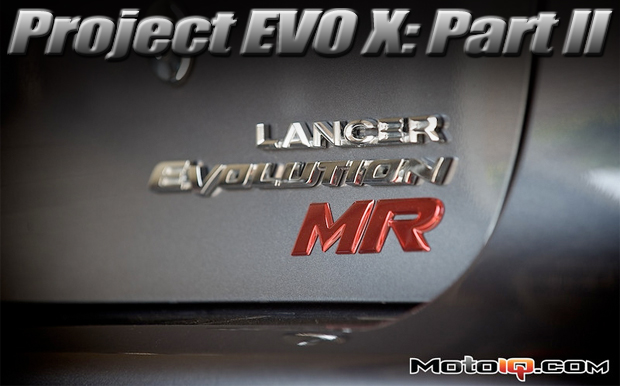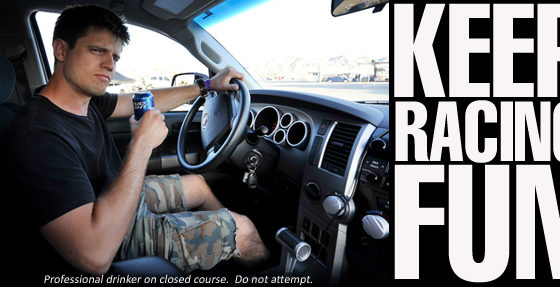,
Despite being much bigger than stock, the Stoptech system is still lighter than the Brembos it replaces. In the front, the Stoptech Aero rotor weights 18 lbs vs the stock 22 lbs. This is 4 lbs of critical rotating and unsprung weight. The Stoptech STR calipers weigh 13 pounds vs the smaller 12 pound Brembos. Subtract one pound for the heat shields that must be removed to clear the bigger rotors and you are four pounds lighter.
 |
| Powerful brake awesomeness, the front Stoptech brake system. |
In the rear the Stoptech rotors weigh 16 lbs vs the stock 20 lbs. The stock 2 piston rear calipers are six pounds and the much larger 4 piston Stoptechs are 10, subtract a pound for the heat shield and you end up one pound lighter than stock. 5 pounds less total unsprung weight and 8 pounds less rotating weight with larger better performing brakes is pretty impressive.
 |
| The Stoptech EVO X rear brake system dwarfs the stock brakes. |
For our wheels to clear our big brake calipers and larger rotors, we used a 5mm H&R hub centered spacer with longer ARP studs to maintain enough lug nut engagement with the spacer.
 |
 |
We replaced our stock Japanese fish oil brake fluid with Motul RBF 660 brake fluid. Motul’s RBF formula is one of the best fluids, performing nearly as well as or better than uber expensive exotic fluids like the legendary F-1 standard Castrol SRF and AP550. Motul’s dry boiling point is really 660 degrees F, amazingly high. Motul works so well that our teams race cars need only bleed the brakes once a season, instead of the typical once a race. Motul also resists absorbing moisture from the atmosphere better than most brake fluids so the high boiling point lasts longer than most fluids.
 |
| Motul Brake Fluid, accept no substitutes! |
The most interesting thing about Motul brake fluid is that it contains surfactants. These help by causing any bubble to collapse within the fluid. In the rare case that you boil RBF 660, simply backing off for a few turns will often allow the bubbles in the fluid to collapse and a nice firm brake pedal to return.
 |
| We used this pressure bleeder to initially bleed the brake system of air. Since pressure bleeding can sometimes create bubble by cavitation in the brake system, we did the final bleeding by hand. |
Since we were improving all of our handling hardware, we also upgraded our wheels and tires. We went to Volk, one of our favorite wheel manufactures to supply the rolling stock for Project EVO X and selected the CE28N. The CE28N is Volks lightest wheel and they have poured plenty of time into Finite Element Analysis to hone its design to be both strong and light.
 |
| FEA represents high stress areas of a part in hot colors. As you can see all areas of this Volk wheel are cool, low stress tones of color. This indicates a good design. |
This technology has allowed Volk to come out with a wheel that is light, stiff and strong. A stiff wheel improves performance by improving steering feel and response, important when using sticky tires that put added strain on the wheel. The additional stiffness also helps hold the tires tread flat on the road under cornering loads as less flex means less loss of negative camber. The stiffness and strength will be appreciated when we subject the wheel to our planned track use. Unlike the typical cast alloy wheel, the CE28N is forged from one piece of billet. Forging is usually reserved for parts that must be very strong, like racing pistons or suspension arms. With forging, a piece of aluminum alloy is smashed in a dies in the shape of the wheel with about 15,000 tons, literally smashing the aluminum into the wheels final shape in about 3 progressive stages. This violent force cold works the metal refining its grain to make it much denser, tougher, more ductile and stronger. The process also causes the metals grain to flow around the wheels shape, aligning it which the direction of stress giving the wheel more strength where it’s needed.


